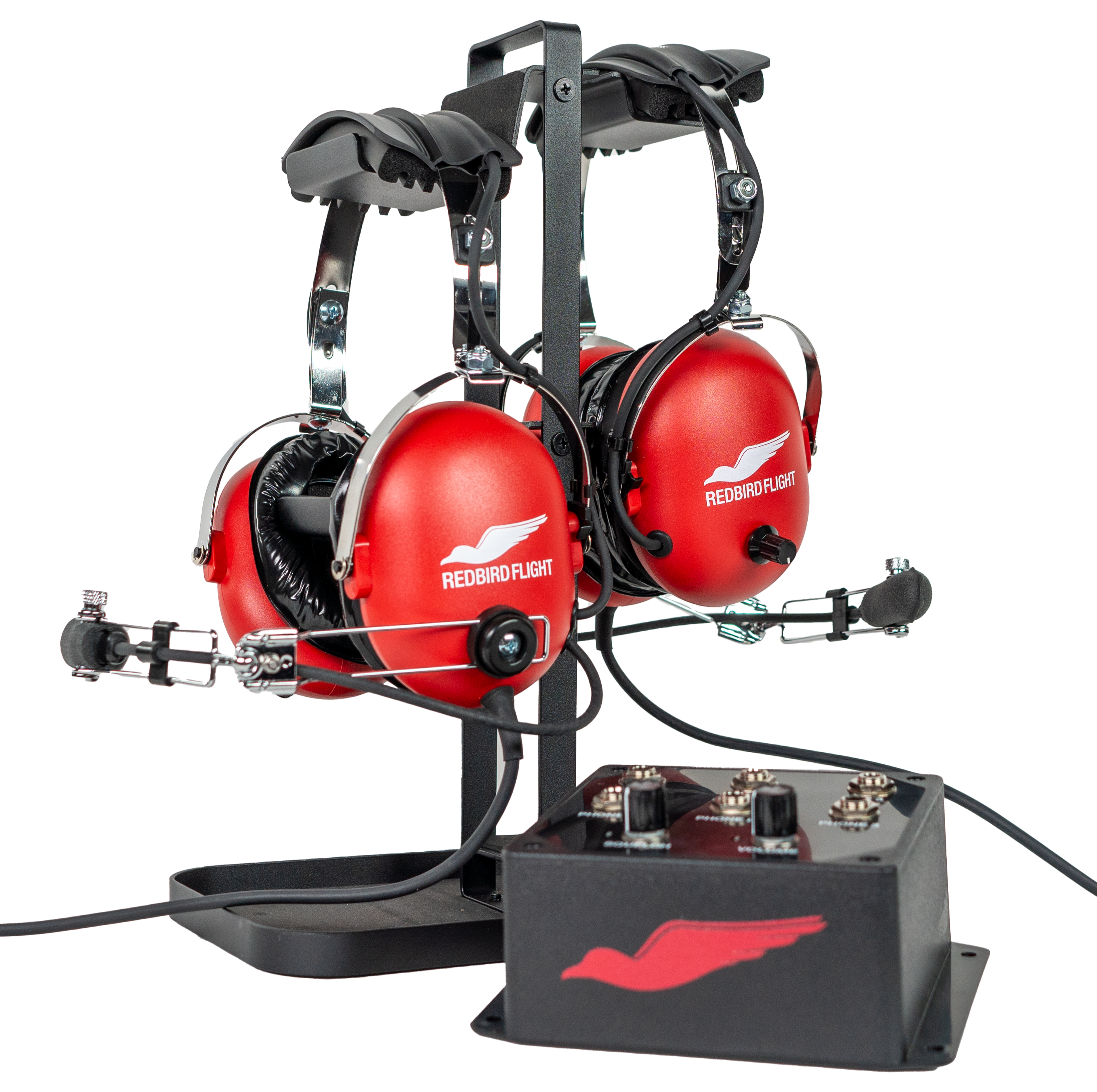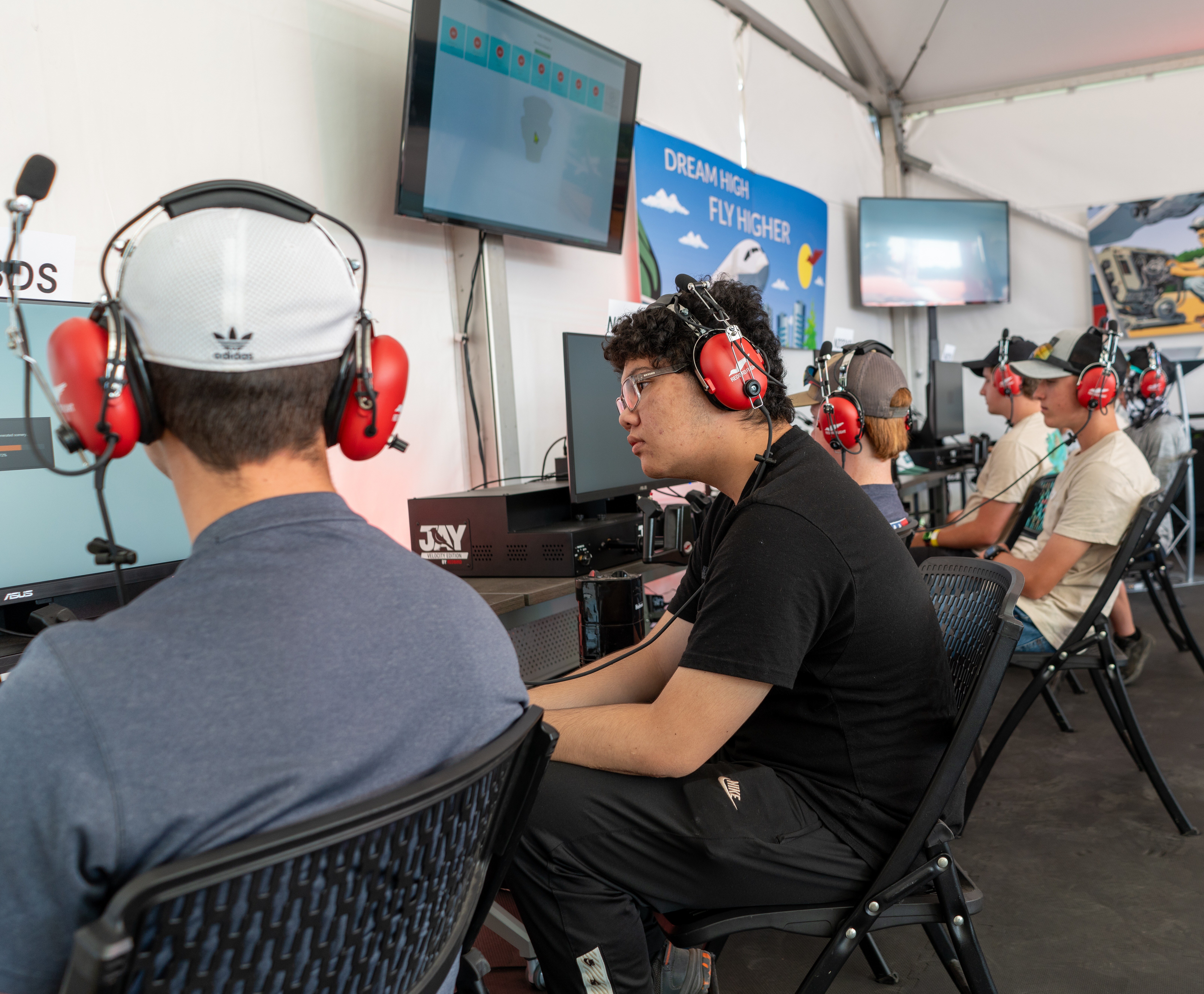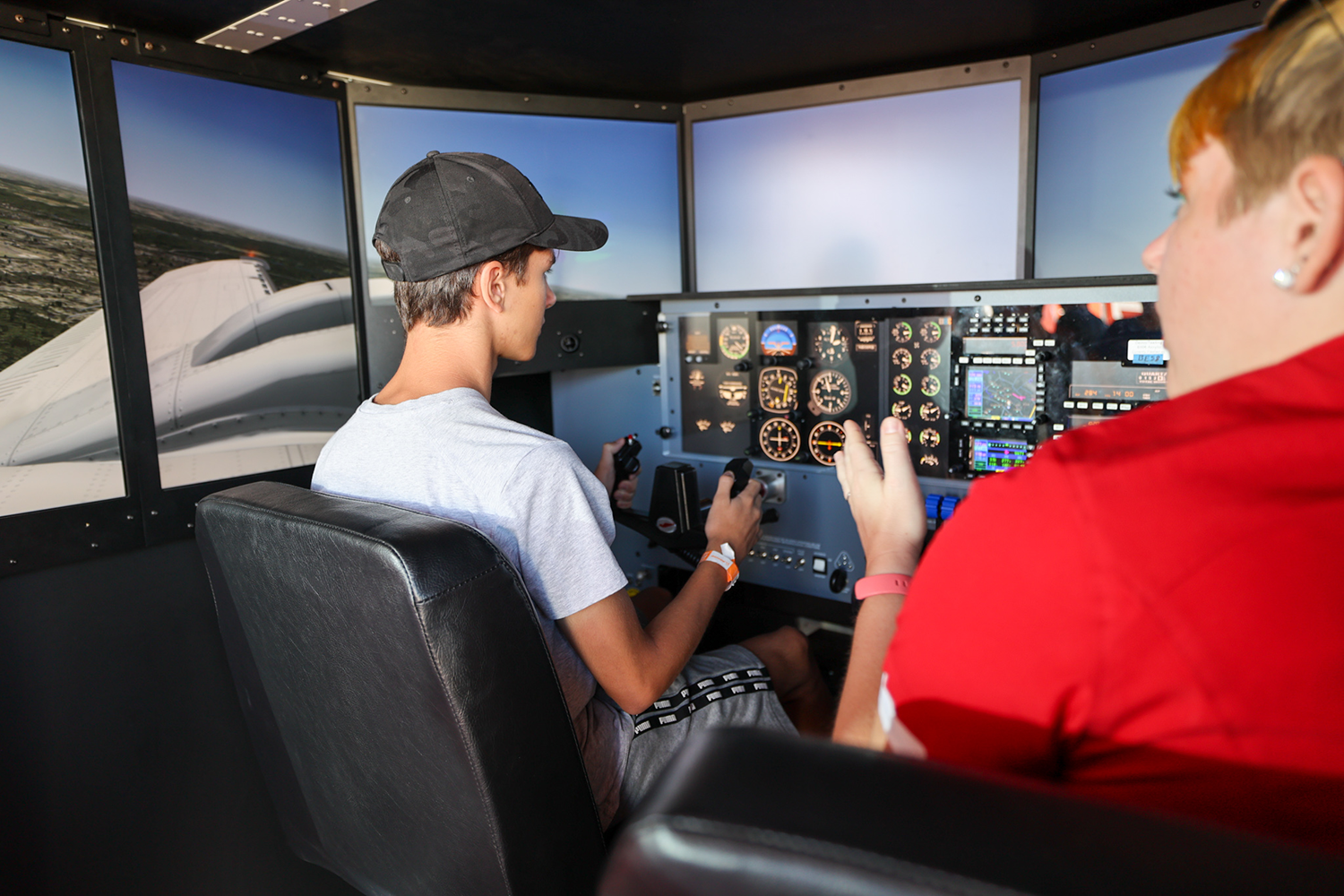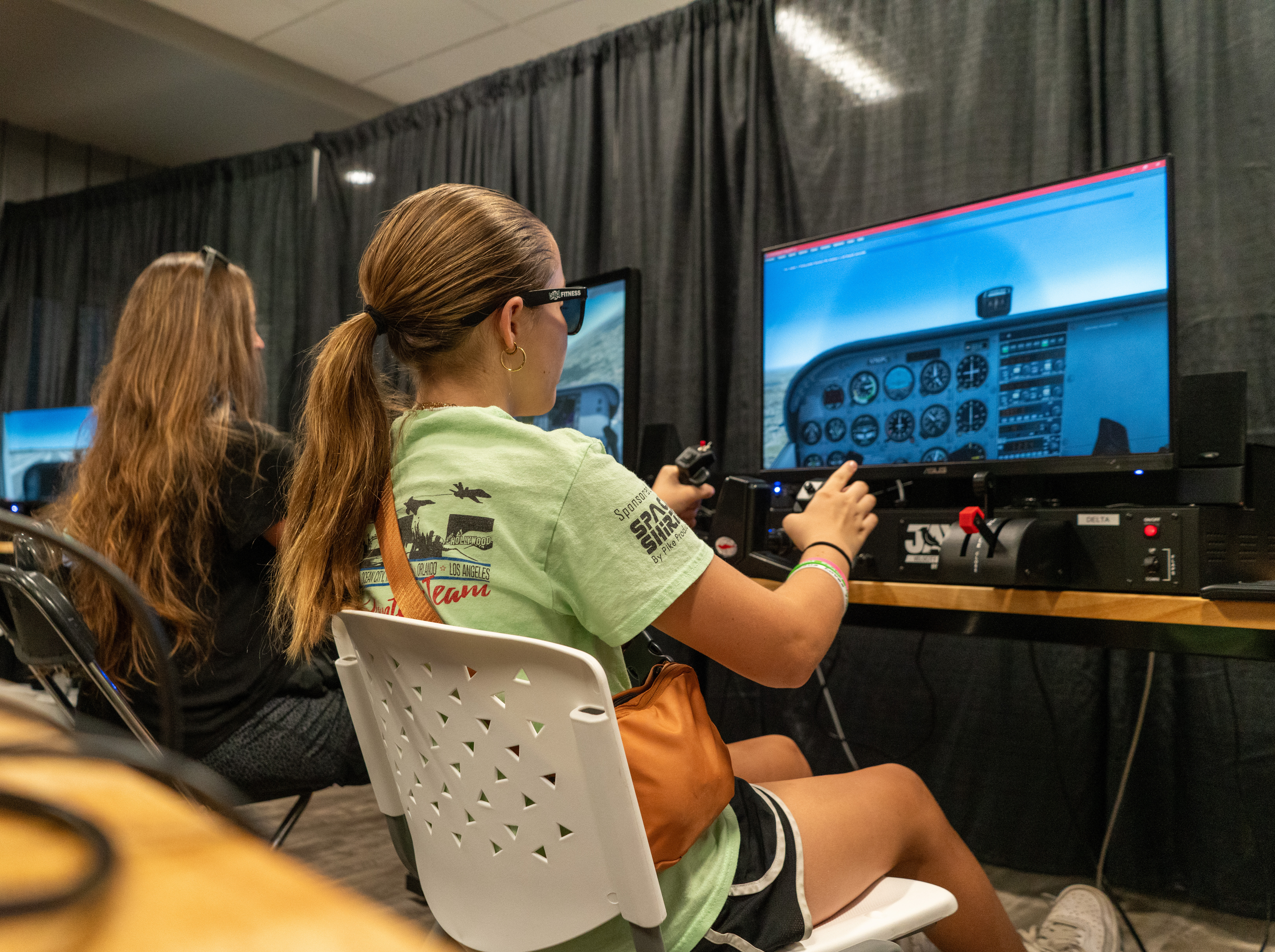Redbird Tracon in the High School Classroom
Many years ago, I taught an “Intro to Computers” class for high school students. I recall the IT department coming in to install software that gave me the ability to freeze the student computers. It also allowed me to see the screen of an individual student or share my screen with one or all students as needed. It was a great administrative tool for the classroom.
That same real-time control (and more) is available for the Redbird flight simulators in your classroom. The solution is called Tracon.
Tracon provides an easy-to-use interface that a single instructor may utilize to oversee and control multiple simulator sessions simultaneously. If you are an aeronautics instructor with a Redbird simulator lab, Tracon will make your life much easier. You can monitor and manage all flights concurrently rather than standing behind one student’s back at a time, optimizing student interaction throughout a course.
The classroom setup is simple. Once you power on the simulators, you launch Tracon on your control computer, don your customized pilot headset for communication (and have the students do the same), and you are ready to roll.
Requirements
Flight simulators
Tracon is compatible with all models of Redbird flight simulators, including in mixed combinations (for instance, a full-motion FMX and a fleet of 12 Jay Velocity desktop simulators).
Software
Tracon running on a Windows computer, as detailed below.
Computer
You can get a controller computer directly from Redbird or purchase your own. The recommended specs for the controller computer include the following.
- 11th Gen Intel Core i7-11370H processor or better
- NVIDIA GeForce RTX 3060 Laptop GPU with 6GB DDR6 or better
- 32GB (DDR4) RAM or more with a 1TB or larger solid-state drive (SSD)
Tracon is only compatible with PCs, and Redbird highly recommends using the latest version of MS Windows as your operating system.
If you aren’t sure what kind of computer to get, or you want to know if a computer you already have is up to snuff, call Redbird.
Network
The controller computer and each simulator must be networked using physical network cables. The controller computer and each simulator must be assigned static IP addresses. Tracon will not work using WiFi connectivity.
If you can use a simple network switch in your classroom, none of the sims or the controller computer need to be connected to the internet unless you are downloading the latest version of the software. Understandably, most school IT departments have strict policies regarding any devices attached to their network. But, since you can run Tracon without connections to anything outside your classroom, this shouldn’t present any IT policy-related issues.
If you and your school’s IT department determine that connecting your simulators and controller computer to the school’s network is an option, have your IT department contact Redbird for the technical requirements.
Communications
The Tracon communications system requires a few types of hardware. The Controller Station Kit (for the teacher) includes a controller communications box and a headset that plugs into it. The controller headset has a microphone and a single ear cup to allow the teacher to listen to flight communications with one ear and the classroom environment with the other.
You will need a Simulator Communication Station Kit for each flight simulator, which includes a station communication box and two custom pilot headsets (traditional two-ear headsets with microphones). The communication station box has three headset ports to allow up to three students to sit at one sim and hear communications.

Additional headsets without a communication box are also available from Redbird. All Tracon headsets are of professional aerospace design and quality, similar to many passive noise reduction headsets pilots use today.
Features
Mission / Scenario Launching
As the teacher, you can select any mission or scenario and launch it on one, some, or all of the machines in your lab. You can create a free flight mission and launch it the same way.
If you have several Redbird simulators in your classroom, you can divide the students into several groups. For instance, you could create teams called “Alpha Flight” and “Bravo Flight.” While Alpha Flight runs one mission on several simulators, Bravo Flight can run a different mission on the others. This approach works well if the groups are at varied experience levels, such as beginner and intermediate.
Monitoring and Management
After you launch a flight, you can see critical data from each simulator, including latitude and longitude, altitude, heading, knots (KIAS), track, ground speed, vertical speed, wind speed and direction, RPM, flaps, barometric pressure, and gear position for each aircraft.
You can cycle through the page to see the primary flight display (PFD) of each machine. The PFD shows airspeed, altitude, attitude, bank angle, vertical speed, heading, selected course, comm and nav radio statuses, and standby frequencies. It mimics the appearance and function of a Garmin G1000 PFD.
Cycle the page again to get an overview of the time and weather during the flight, including temperature, barometric pressure, surface visibility, and surface winds. Additionally, you can check weight and fuel and see if any failures are active.
One final toggle shows a scalable map featuring the selected aircraft from an overhead view, similar to the vantage point of an air traffic controller.
The sheer amount of data available to the teacher is remarkable. You can set the map view to include all aircraft in the mission. Each aircraft can be color-coded to make it easier for visual reference. These feature sets support a realistic air traffic control simulation with two-way radio communication.
Importantly, Tracon allows you to start, pause, and end flights. Additionally, you can set or change many flight variables — including weather, time of day, and location — before a flight, while paused, or in the middle of a flight. You can control one, some, or all of your sims in this manner at once.
Integrated Communications

The integrated communications system is arguably the feature most capable of transforming your classroom. I had the chance to witness it in action at Redbird Migration 2024. Greg Roark, Director of K-12 Education for Redbird, and Harvey Madison, Director of Instructional Design & Content, guided two groups of pilots (the aforementioned Alpha Flight and Bravo Flight groups) flying on Jay Velocity simulators.
Each pilot wore custom pilot headsets connected through the Tracon communication box. As the instructors, Greg and Harvey wore controller headsets connected through the Tracon controller communication box. Both instructors could talk to their group of pilots at the same time or individually. Pilots at each simulator pressed the push-to-talk button on their yoke to talk to their instructor.
For the beginner group, Harvey kept the radio chatter between him and individual aircraft. The other pilots could not hear each other. But, when Greg conducted his flight with the Bravo Flight, he turned on the all-talk feature, meaning when one pilot pressed the push-to-talk button, their transmission would be heard by all other pilots on frequency, just like in the real world. It was great to see the flexibility and versatility that Tracon has to offer.
Pricing
Tracon Software $4,995
Computer (optional from Redbird) $5,295
Controller Communication Kit $295
Simulator Communication Station Kit $995
Additional Communication Box $595
Additional Headset (each) $195
A Final Word
Whether you choose Tracon for a small lab of two to four flight simulators or a large lab of 10 or more, you will quickly realize that it’s the tool you didn’t know you needed. The ability to launch flights on one, some, or all of the machines at once ensures everyone is on the same page. You won’t run into students modifying the missions or needing to straighten up and fly right because you will have complete visibility and total control.
The ability to pause some or all of the machines with a mouse click is worth its weight in gold.
You can change weather variations on all the sims at once. Adding a wind shift on final or gradually lowering the visibility as students approach an airport is easy. As the instructor, seeing each PFD makes it easy to quickly diagnose deviations in altitude, bank angle, or airspeed.
But it’s the communications element that puts an exclamation point on Tracon. It adds so much more realism and makes classroom management super easy. Truly, the importance of this communication tool cannot be overstated. Talking on the radio is one of the most challenging tasks for new pilots. Redbird has made it easy for students to develop their radio skills with the controller and other pilots on a common frequency, just like in real-world flight operations.
Tracon makes it incredibly easy for a single teacher to manage a flight sim lab while keeping students directed and engaged throughout the session. The product is a game changer in flight simulation, particularly in K-12 schools.
Share this
You May Also Like
These Related Articles

Monetizing a Flight Simulator for Your High School Aviation Program
.jpg)
Best Practices for Using a Redbird Jay in the Classroom

